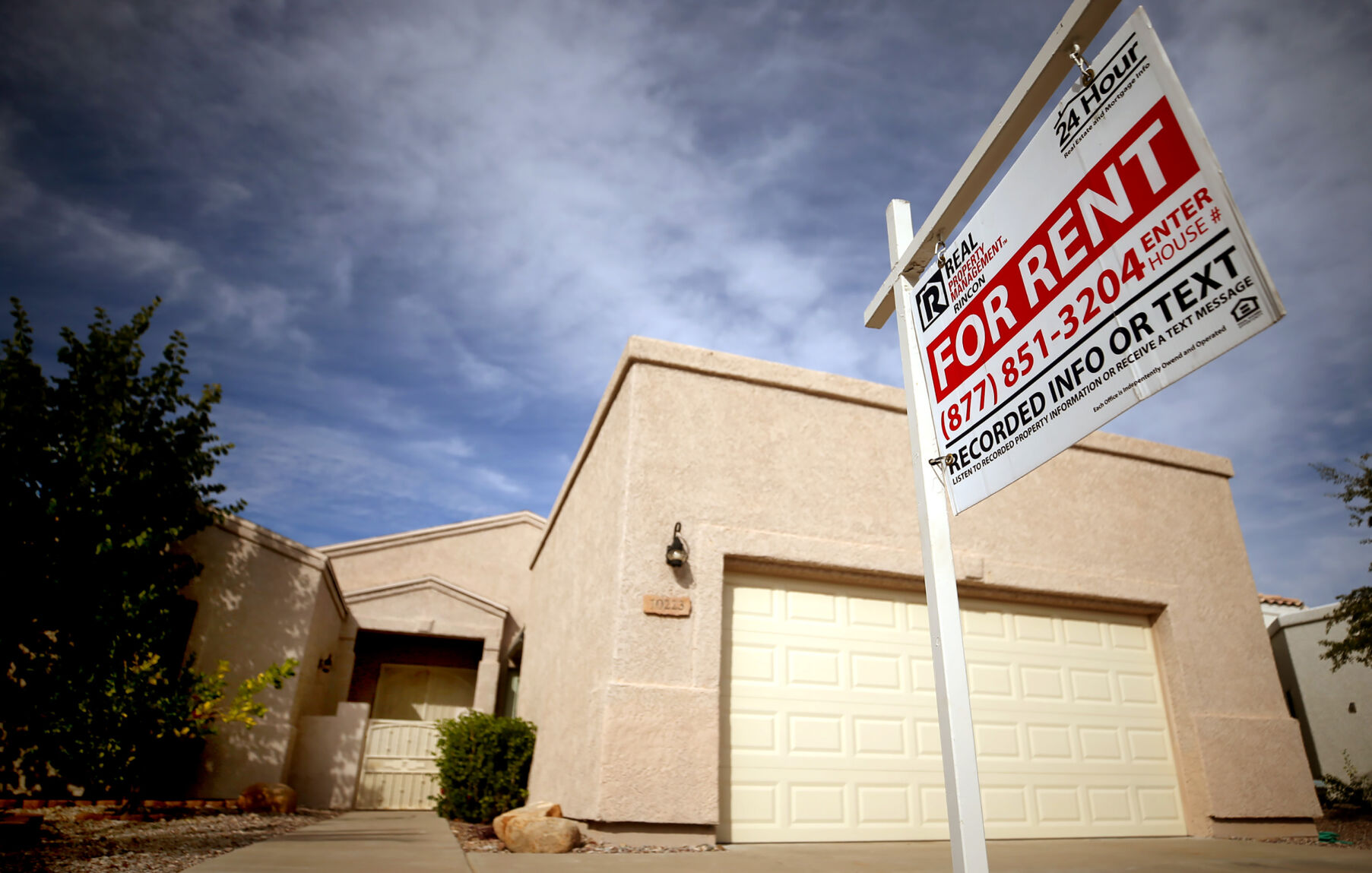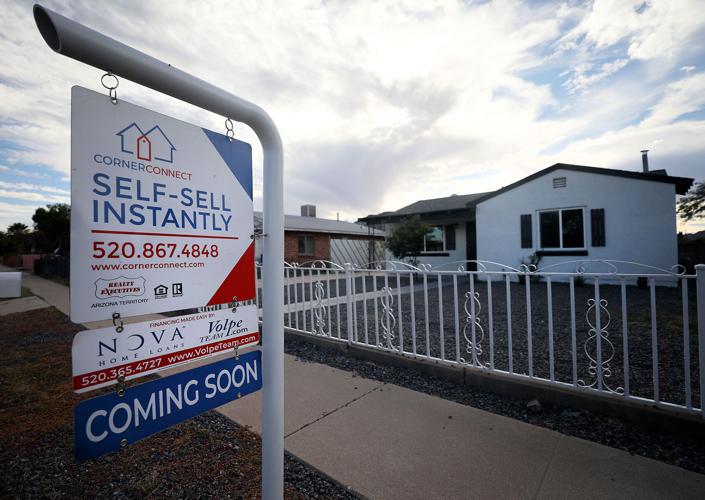New home builds are down in Tucson and potential buyers, spooked by rising interest rates, are holding onto their existing homes.
Both of these factors are adding to the lack of available homes for sale and the biggest toll is being felt by renters.
Whether by necessity, because they can’t afford to buy a house, or lifestyle choice, higher rents have taken a toll.
While the upward spiral of rental prices in the Tucson market has slowed a bit, rents are still up to 50% higher than in 2021 and there’s no indication they will decrease significantly.
Earlier this year, homebuilders were starting homes before they were purchased because demand was so high, but that strategy has “vanished” said Jim Daniel, a local housing analyst with R.L. Brown Reports.
In September, there were 215 permits pulled for new homes — more than 52% less than September 2021 when homebuilders pulled 455 permits.
Daniel said it is a reflection of rising interest rates, which last week topped 7%, and the government’s “well-publicized desire to slow down the economy deemed overheated.”
“The impressive performance of the Tucson economy and the job and population growth in the face of the outflow of populations and industry from California and elsewhere cannot overcome these headwinds, and Tucson, along with Phoenix and many other housing hotspots of just yesterday are feeling the pressure that results from the dramatic change of just the last few months,” Daniel said.
Home prices haven’t exactly tumbled.
The average new home is now more than $470,000 and a resale home’s average price is more than $372,000.
Daniel is optimistic that the homebuilding pause in the Tucson market is temporary.
“Tucson homebuilders have turned to mortgage interest rate buydowns, coupled with incentives for both buyers and for agents, as their counter-strategy to both higher mortgage rates and decreased demand frenzy and the sudden availability of inventory due to cancellations,” he said. “Obviously, this is a more logical counter-strategy than base price cuts that can create turmoil among those remaining unclosed homebuyers.”

A home for sale in the Menlo Park neighborhood in Tucson.
Demand for rentals
In September, the median asking rent in the Tucson market was $1,950 — relatively flat month over month but nearly 50% higher than September 2021, according to rental platform Dwellsy.
Renters by choice are typically looking for a single family home to rent with a yard for pets.
This lifestyle preference has fueled explosive growth of communities known as build to rent — gated single family home developments that are only for renters.
In Tucson, there are more than a dozen such projects both complete and under construction with thousands of homes.
There is still demand for existing homes for rent in regular neighborhoods, but a lack of supply.
Nearly half of homeowners are considered equity rich, meaning that the combined estimated amount of loan balances secured by those properties was no more than 50% of their estimated market values, according to real estate data curator Attom.
Some homeowners have tapped into that equity to expand their home or buy a new home, but keep the old home as a rental investment.
Both of those scenarios are keeping existing homes off the market.
That is reflected in the demand for apartments, another source of housing that is in short supply.
New complexes are filling up as soon as they open for lease and there are currently only four complexes under construction with 50 or more units, the ABI Multifamily third quarter report shows. They are:
120-unit Gateway, 338 W. Drachman St.
107-unit Rio Mercado, 5489 S. Park Ave.
300-unit The Place at Silverbell Gateway, 7430 N. Silverbell Road
312-unit Encantada Saguaro National, 5750 S. Houghton Road
Another dozen complexes are proposed and in varying stages of permitting and zoning approval from local jurisdictions.
The lack of housing, while it sounds glum, is an indication that the local housing market will remain healthy, Daniel believes.
“There has not been a collapse in new-home closing activity,” he said, noting there were 2,690 new home closings for the year through September, versus 2,538 for the same time period last year.
“The continued relative shortage of housing could well support sustained new-home closing activity,” Daniel said. “So much for the doom and gloom ... and if we assume that once the current spec permit overhang is completed and sold, builders will increase their permit activity to match the demand, we might assume that the demand for housing fostered by the economic and population growth of this marketplace will continue to propel the Tucson housing market at a reasonably robust and a sustainable level even at mortgage rates at more ‘normal’ levels.”
Tucson trade school offers certification for aspiring construction workers.





